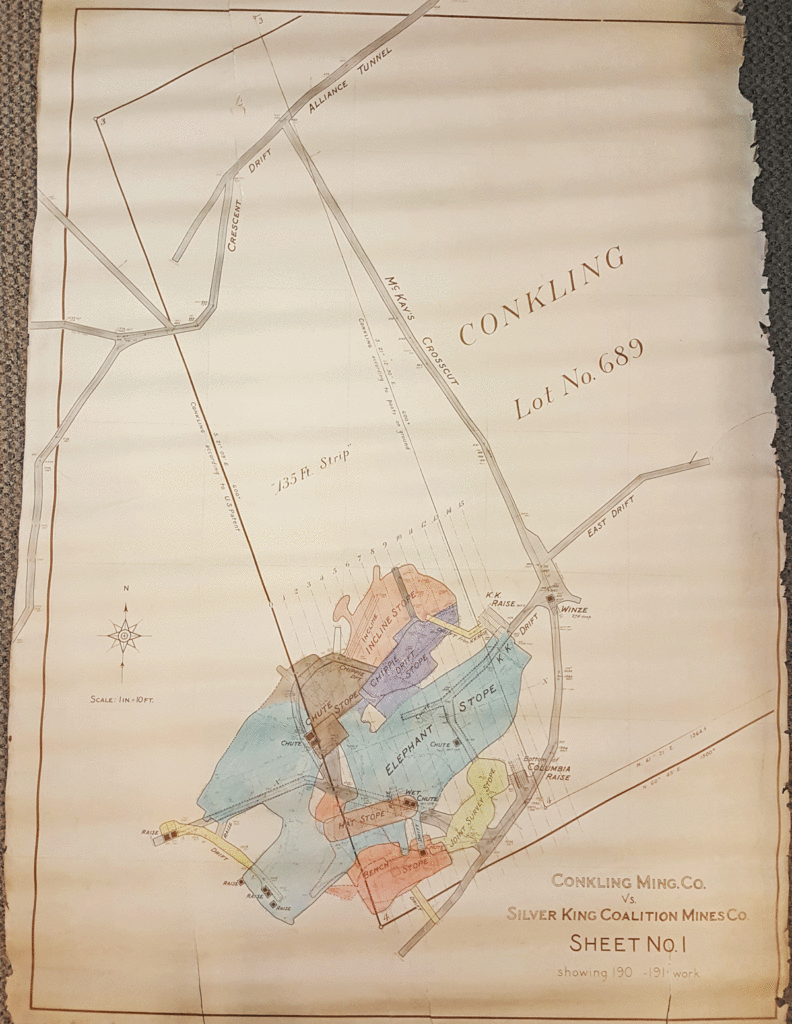This is the tenth article in a series on the Conkling Mining Co. v. Silver King Coalition Mines Co. lawsuit.
A great majority of Parkites rejoiced when word came on July 15, 1912 that Judge John A. Marshall of the United States District Court of Utah had rendered a decision in the damage suit lodged against the Silver King Coalition by the Conkling Mining Company four years earlier. The case was one of the most hard-fought and important pieces of litigation ever adjudicated in the Park City district of the state. It was one of the largest that had been tried in the federal court over mining property.
It was Judge Marshall’s opinion that the 135.5-foot strip was not part of the Conkling claim. He wrote that this claim was officially surveyed for patent under the direction of the surveyor general, and that the official field notes of the survey with evidence as to the existence and position of survey posts on the ground marking the southwest end line of the claim excluded the strip from the Conkling patent.
Judge Marshall upheld the King’s contention that the apex of the Crescent fissure was within the Silver King’s Monroe Doctrine, Cumberland, and Constitution claims. Under the mining act of May 10, 1872, the Silver King had extralateral right to the Elephant stope, which was not a distinct bedding deposit, but part of the fissure vein which passed beneath the Conkling claim, he ruled. The Judge ordered the case dismissed on August 9, 1912.

Credit: Park City Historical Society & Museum, Paul Baker Collection
Five months later Judge Marshall granted the Conkling Mining Company an appeal to the Eighth Circuit Court of Appeals in St. Louis. Two and a half years after the case was submitted and argued, a decision concurred by the entire court was rendered on Valentine’s Day 1916. Based on the grounds of insufficient evidence the circuit court handed David Keith and Thomas Kearns a resounding defeat, demolishing their entire defense on all points. The appellate court decreed that the Conkling claim was fifteen hundred feet in length and embraced the whole of the 135.5-foot strip. They also found that the Silver King had no right under the law to pursue the Crescent fissure vein beyond the located end lines of the three claims it owned. The case was remanded to the Utah federal district court for an accounting of the amount and value of the ore that had been extracted by the Coalition from the ground in dispute.
Contending that this decision by the Eighth Circuit Court of Appeals would have telling influence on other mining litigation, attorneys for the Silver King Coalition Mines Company made application to the United States Supreme Court for a writ of certiorari for a review of the law and evidence in the case. A message received from Washington on October 17, 1916 stated the writ had been denied. With all appeals exhausted, the Silver King Coalition Mines Company would now have to submit a complete accounting of ores taken from the Conkling Mining company. The amount involved was placed at more than $1,000,000.00 in the opinion of the Conkling attorneys.
This story will be continued. The Park City Museum has three more members-only hikes to old mine sites this month. Don’t miss out on these informative, social, and recreational hikes!